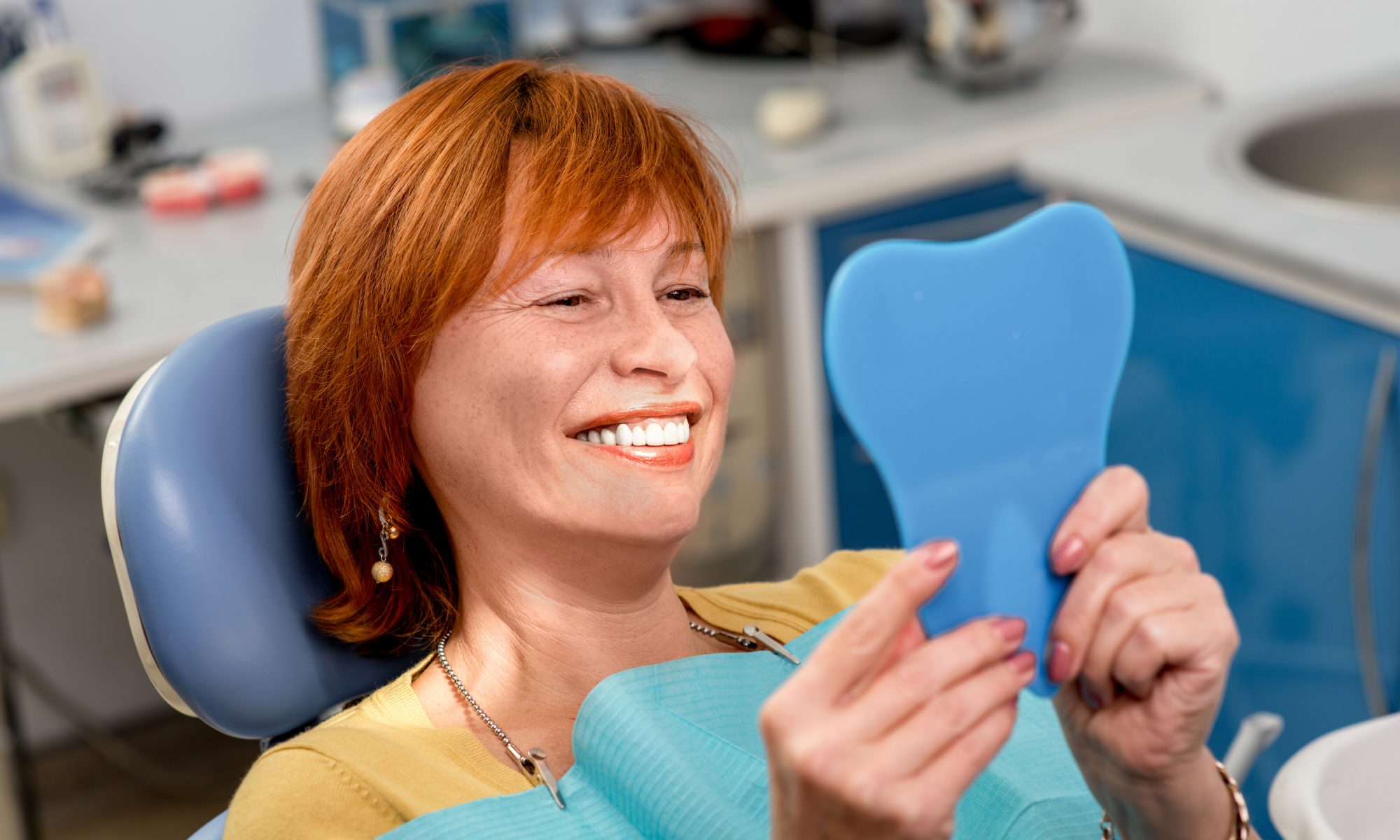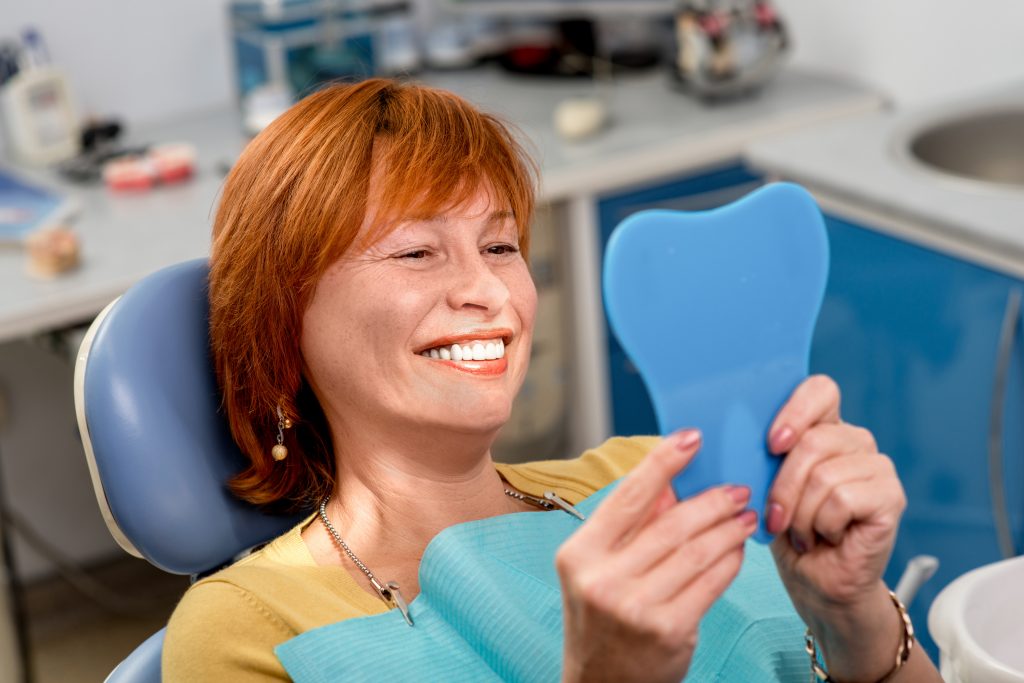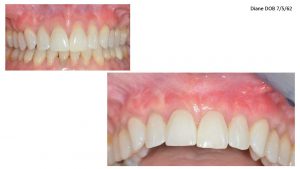The health and appearance of your gums are just as important for your beautiful smile as your teeth. They are said to be the frame around the photo, so maintaining them is vital if you want to show off your pearly whites with pride. We employ a method that allows us to enhance the appearance of your soft gum tissue while also performing a restoration.
Here is a real-world example of an effective soft tissue graft on a patient:
A 35-year-old patient was missing two teeth in the front of her mouth with an aging bridge she found unappealing. While her goal was to simply replace the bridge, a closer examination revealed how an unsightly indentation in the gum tissue is what had compromised the appearance of her bridge. Beyond replacing the bridge, we wanted to enhance her soft gum tissue as well, as it would work to improve her overall oral aesthetic.
Through the use of a minimally invasive tunneling procedure, we placed a collagen graft to build out the tissue and create the impression that a tooth was present. We saw the improvement immediately following surgery, and in the coming weeks, her big more closely mimicked the appearance of real teeth than an artificial solution. Rather than simply reconstructing the tissue, it was important for us to create the illusion that she had never lost her teeth in the first place.
If the appearance of your gums is affecting your smile and confidence, a soft tissue graft may be the solution you have been looking for. A soft tissue graft is minimally invasive, will improve the look of your gums, and allow you to embrace your gorgeous smile.
If you would like more information about soft tissue grafting, call Dr. Cabrera in Chicago, IL at 312-994-7939 or visit www.perioimplantchicago.com.
Dr. Cabrera proudly serves Chicago and all surrounding areas.






